As we have a particular interest in visiting the countries and territories that once formed the USSR, officially the Union of Soviet Socialist Republics, we thought it would be beneficial to create a short history of how this vast empire came into being and what eventually led to its downfall. Of course, the topic is far more in-depth and complex than the 1,500-odd word narrative we have generated below to describe it but our aim was to keep this post short and provide just a general overview.
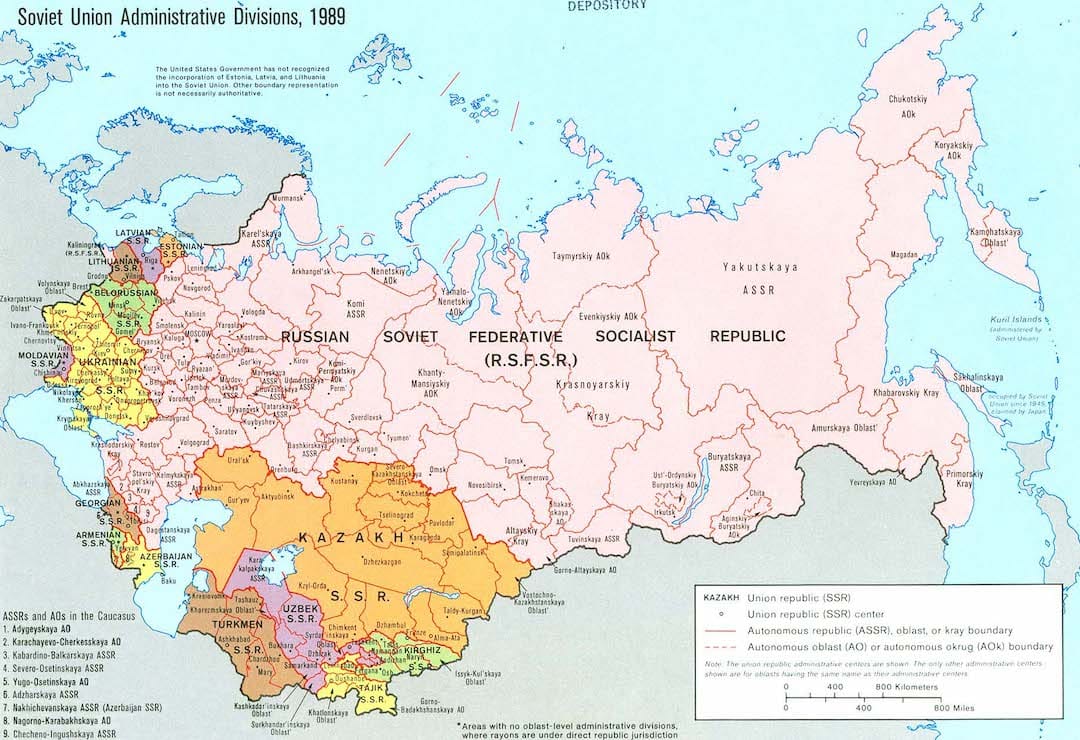 Map of the Soviet Union
Map of the Soviet Union
The origins of communism – Karl Marx and Friedrich Engels
It all began with German philosophers and social scientists, Karl Marx and Friedrich Engels who, in 1848, wrote The Communist Manifesto for a London-based group of revolutionary socialists known as The Communist League. In the manifesto, Marx and Engels argued that capitalism, as it existed throughout nineteenth-century Europe, would eventually self-destruct and be replaced by a worker-led government wherein the workers would jointly own and benefit from all means of production. Communism, meaning the abolition of private ownership and where ‘each contributes and receives according to their abilities and needs’ was born.
The Russian Revolution and Vladimir Lenin
The concept of communism lay unproven until a member of the Russian Bolshevik revolutionary party, Vladimir Ilyich Ulyanov, better known as Lenin, seized the opportunity to harness and coordinate the proletariat unrest in Russia against the aristocratic monarchist Russian government led by Tsar Nicholas II, a member of the ruling Romanov family. In 1917, Russia was already in turmoil and Lenin masterminded the overthrow of the Romanov dynasty causing Nicholas II first to abdicate and then assassinated.
Over the next few years, Lenin and his fellow Bolsheviks consolidated the Russian Revolution and set up a number of regional councils called soviets both in Russia and within the annexed Russian ‘colonies’ of Kazakhstan, Kyrgyzstan, Moldova, Tajikistan, Turkmenistan and Uzbekistan. The Bolsheviks also supported their neighbours in similar revolutions and signed treaties with the Transcaucasian republics (Armenia, Azerbaijan and Georgia), Ukraine, and Belarus and by 1924, Russia had created the Union of Soviet Socialist Republics, the USSR, comprising twelve republics. During WW2, the Baltic states of Estonia, Latvia and Lithuania were added bringing the total to fifteen states within the union.
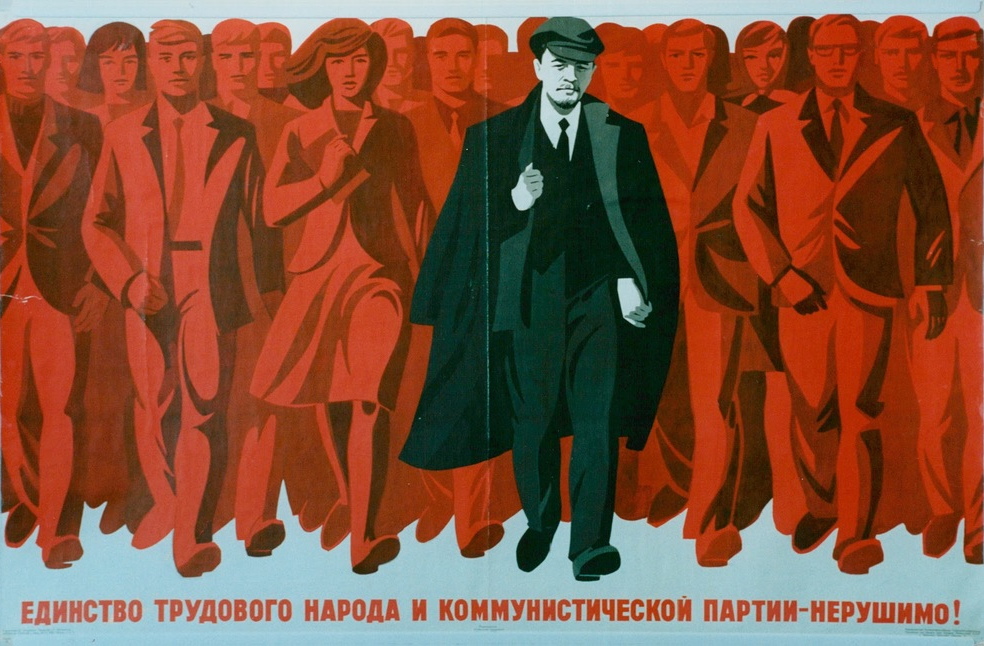
The Soviet Union under Joseph Stalin
When Lenin died in 1924 and after a brief power struggle, his position as head of government was taken by the Georgian, Joseph Stalin. And thus began the darkest period in the history of the Soviet Union. Stalin’s interpretation of Leninist-Marxism led to the 1932-33 famine, the rapid expansion of the forced labour camps known as gulags, multiple political purges (particularly the Great Purge of 1936-38), and by 1937 he had become a dictator in charge of a totalitarian state and totally obsessed with self-glorification; a personality cult. He implemented a huge growth in patriotic statues in public places; constant praise in the state-owned press who positioned him as a benevolent and caring father figure; the subject of artistic creations in literature, paintings, film and music; extensive renaming of streets, places and geographic features; and a form of ornate pompous architecture based on Gothic and Baroque forms that became known as Stalinist architecture.
The height of the Soviet Union and the Cold War
Following Stalin’s death in 1953, his position as General Secretary of the Communist Party of the Soviet Union was taken first by Georgy Malenkov, who lasted just six months and was then ousted by Nikita Khrushchev who almost immediately began the process of de-Stalinisation – the dismantling of Stalin’s reputation and rebuilding of the Soviet Union along less repressive lines. Khrushchev’s agricultural and industrial policies largely failed and he was replaced by Leonid Brezhnev in 1964 who stayed as general Secretary until his death in 1982. Brezhnev was succeeded by Yuri Andropov who lasted two years before being replaced by Konstantin Chernenko who, one year later in 1985 and following Chernenko’s death, was succeeded by Mikhail Gorbachev, the unwitting architect of the dissolution of the USSR.
In the thirty-year period spanning Khrushchev to Gorbachev, successive leaders of the USSR struggled with the rise of capitalism in Western Europe and North America and the associated visible improvements in standards of living, education, material wealth, agricultural practices, technology and health, and various leaders tried to counteract the soviet perceptions that the USSR was falling behind. Khrushchev, for example, redirected Soviet architects to design and build simpler more-functional style of buildings creating what is now known as the Soviet Modernism style of architecture, a branch of Brutalist architecture. He also relaxed the censorship of the arts, allowing, for example, the publication of Aleksandr Solzhenitsyn’s depiction of life in a Soviet gulag, One Day in the Life of Ivan Denisovich, published in 1962 and probably the most savage indictment of Stalin’s gulags.
Leonid Brezhnev reversed many of Khrushchev’s liberalisation policies and throughout his eighteen years in power, Brezhnev reverted to the Stalinist model using repression and fear to implement his agricultural and military policies, and did very little to de-escalate the Cold War with Europe and the USA despite his support of détente. Although Brezhnev built up the USSR’s military might, including nuclear weapons, his agricultural and other manufacturing policies at home failed and the economy of Russia stagnated.
Neither Andropov nor Chernenko were in power long enough to have any impact on Russia’s economy and it fell to Mikhail Gorbachev to restart the process of bringing Russia and the USSR states in line with the growth in prosperity in Western Europe and North America.
Perestroika and glasnost
Before he became the eighth and final General Secretary, Gorbachev was a keen supporter of Khrushchev’s de-Stalinisation program and was heavily influenced by the 1986 Chernobyl nuclear power plant disaster and subsequent attempts to cover up what had happened. He also felt that Russia and the whole USSR was in desperate need of social reform and, in 1985 when he became General Secretary, he implemented his two famous programs of perestroika and glasnost. Perestroika, meaning restructuring, was aimed at reforming the policies and practices of the Communist Party of the Soviet Union to become more like the western free-market system based on democratic elections and an embracing, rather than repression, of different cultures and religions. Glasnost, meaning openness and transparency, was a program introduced at all levels of government aimed at encouraging constructive criticism of local and national programs, something that would have never happened under Stalin’s rule.
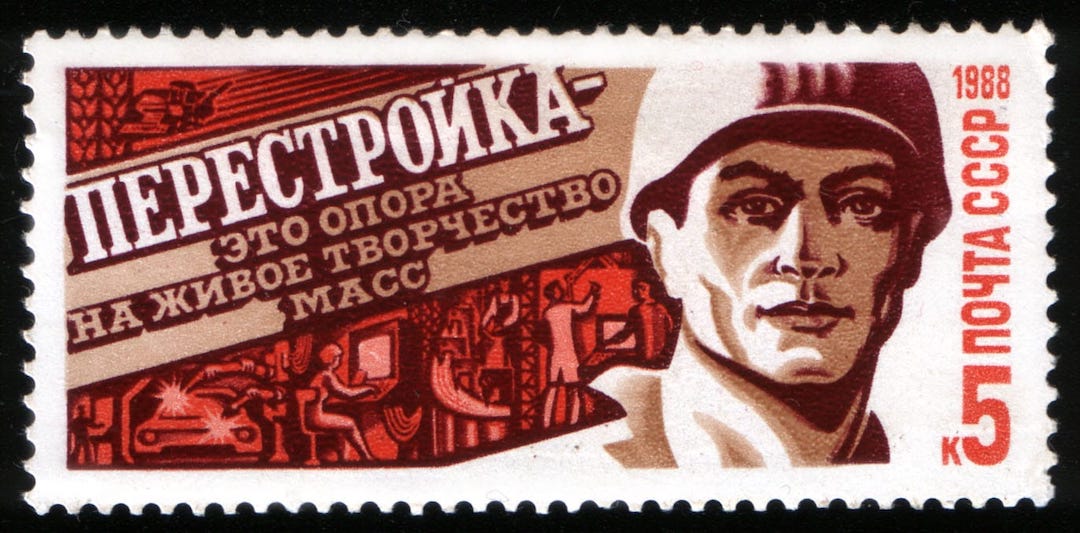
USSR stamp: Propaganda for Perestroika. It reads “Restructuring is the reliance on the living creativity of the masses.”
The collapse of the Soviet Union
Although a committed socialist, Gorbachev felt that without the freedom of expression afforded by glasnost and the free-market reforms built into perestroika, the USSR would not survive against the capitalist systems of the West. His objective was to build a better implementation of communism and, in that, he failed. Six years later, in 1991, the USSR was disbanded and all the member states returned to an autonomous status.
This was not surprising. If you look at the history of, for example, the ‘stans’ – Kazakhstan, Kyrgyzstan, Tajikistan, Turkmenistan and Uzbekistan, you will see that each area was originally annexed by Russia at various times in the nineteenth century and thus became part of the Russian Empire. When the Bolsheviks came to power in 1917, the ‘stans’ were automatically included in the conversion to a communist soviet state and there had always been a resentment to Russian rule and, in particular, Russification, a process whereby a non-Russian community gave up its culture and language in favour of the Russian one. When Gorbachev announced his perestroika/glasnost programs, each of these satellite states saw it as an opportunity to regain their national independence and began to reform along national lines.
The same happened in the other Soviet states (Transcaucasian republics, Ukraine, and Belarus) and, particularly, in the three Baltic states assigned to Russia after WW2. The whole USSR was seething with separatist movements and, ironically, it was a non-USSR state, East Germany, that sealed the fate of the USSR. East Germany came under communist control at the end of WW2 but was never formally admitted into the USSR, similar to other east European communist states such as Poland, Hungary, Romania, Czechoslovakia, Albania and Yugoslavia. In November 1989, the world watched at East Germans tore down the hated Berlin Wall and poured into West Berlin thus starting the process of Germany’s reunification. This very emotional moment in history gave strength of purpose to all other USSR and satellite states and on the 26 December, 1991, the dissolution of the USSR was complete. Mikhail Gorbachev resigned the day before saying his General Secretary office no longer existed and handed over his President of Russia position to Boris Yeltsin. When Yeltsin died in 2007, Vladimir Putin became the President and remains so to this day.
The aftermath of the dissolution of the Soviet Union
Throughout all the original fifteen republics of the countries that made up the USSR, you will find many vestiges of this experiment in communism: statues of the leaders such as Lenin and Stalin (although decommunisation policies in countries such as Ukraine, for example, have caused many statues and other images of both men to be removed and destroyed); monuments extolling the patriotic glory of Mother Russia; buildings in both Stalinist and Soviet Modernism styles, many now in a state of decay; artistic works such as bas relief, mosaics and paintings glorifying the workers, family units, and military personnel; and other remnants of the era including museums, especially the Stalin Museum in Gori, Stalin’s birthplace in Georgia, that tries hard but fails to be unbiased and not venerate the tyrannical leader.
One wonders what Marx and Engels would have made of the growth and decline of the USSR. There is no doubt that both were sincere in their belief that communism was the only way forward but it would appear that they failed to take account of the more pragmatic aspects of the effects of rule and power. It’s a pity they were unable to take note of Lord Acton’s famous remark in a letter to Bishop Creighton, ‘Power tends to corrupt, and absolute power corrupts absolutely. Great men are almost always bad men, even when they exercise influence and not authority, still more when you superadd the tendency or the certainty of corruption by authority.’ The letter was written in April 1887, thirty-nine years after Marx and Engels produced The Communist Manifesto.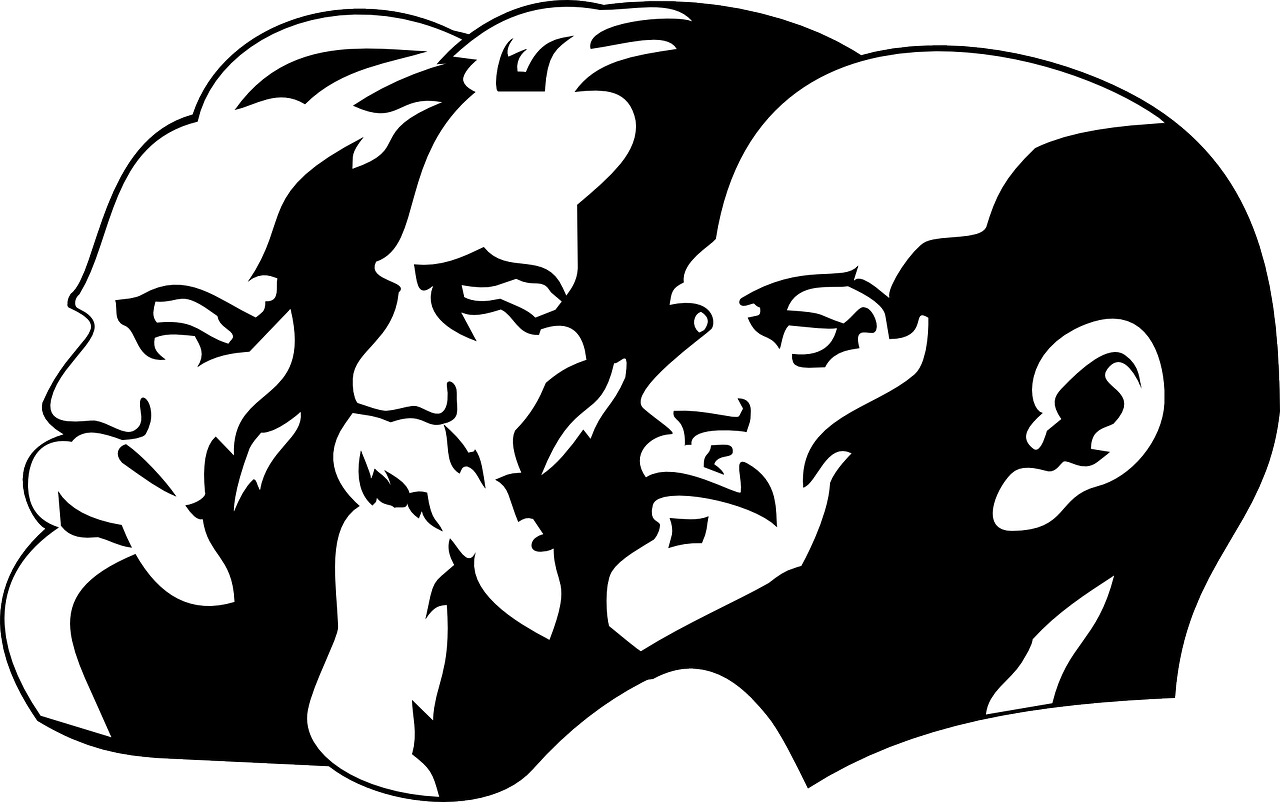
BROWSE OUR BLOG POSTS FEATURING COUNTRIES OF THE FORMER USSR
SEE MORE MONUMENTS & ARCHITECTURE FROM THE FORMER SOVIET UNION
DO YOU ENJOY LEARNING ABOUT THE HISTORY OF THE PLACES YOU VISIT? PLEASE, PIN THIS POST…
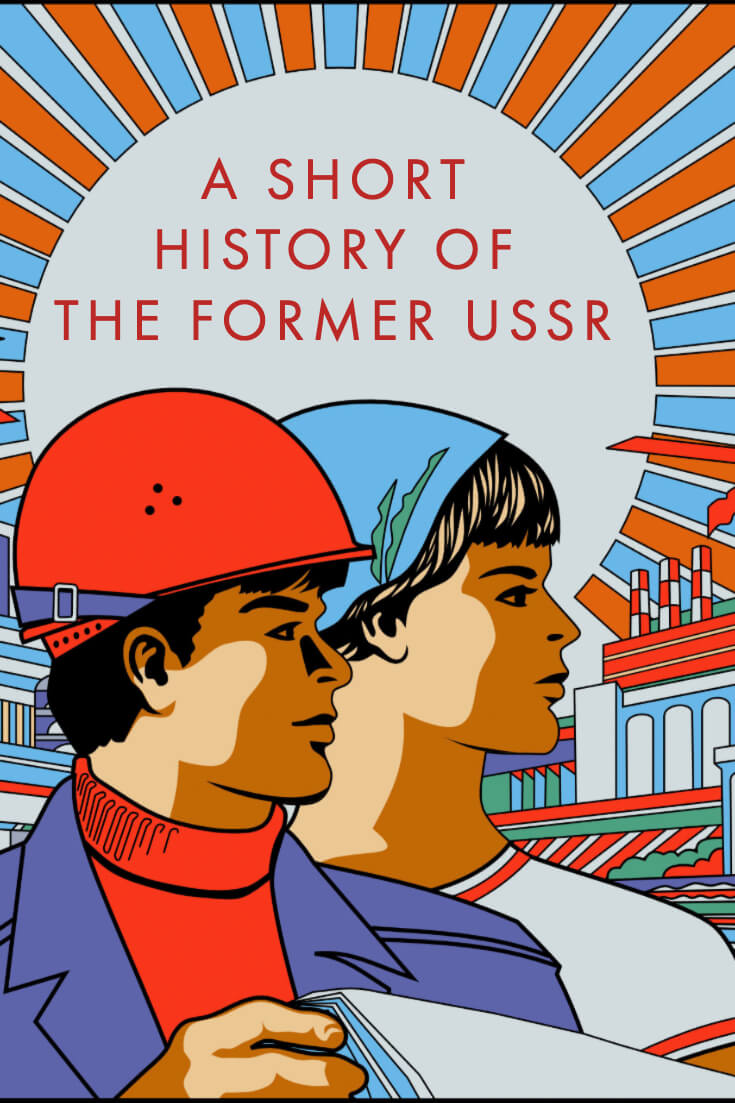
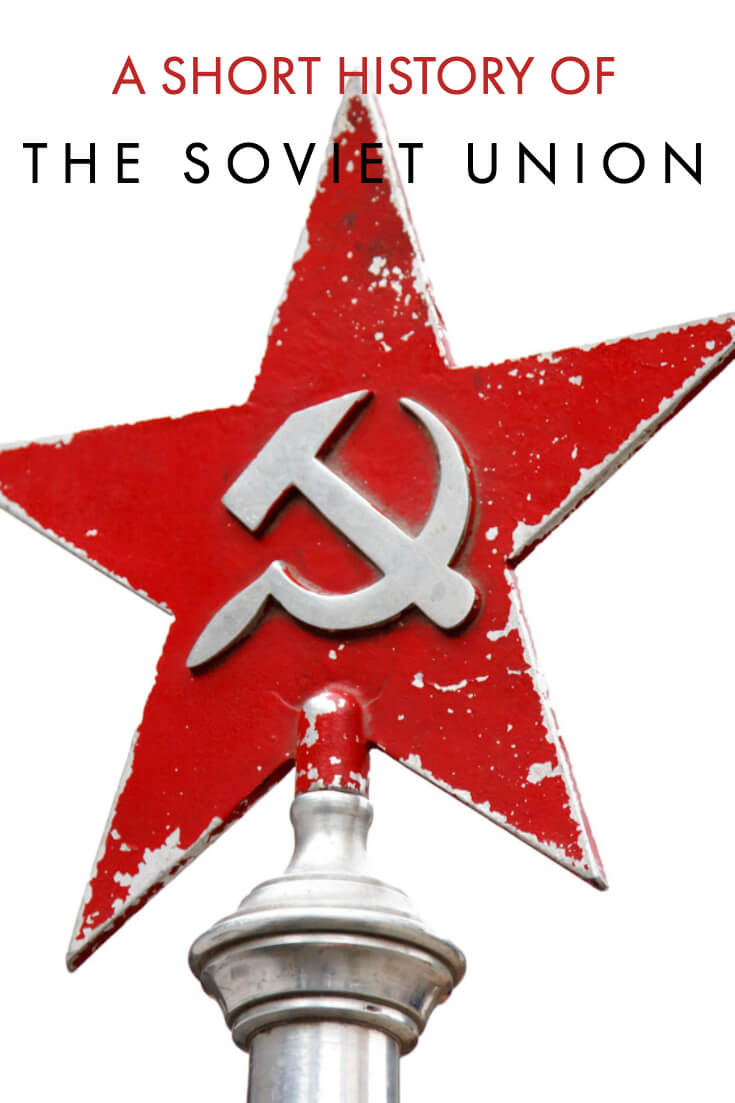
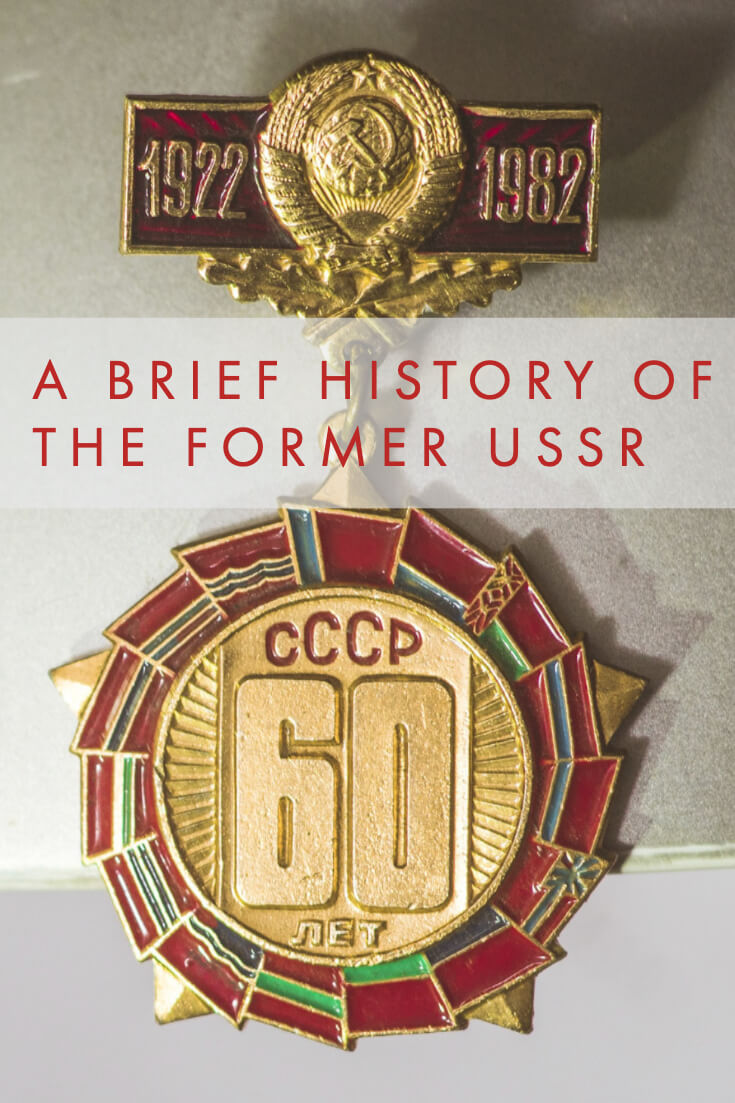

This blog was very informative. To increase credibility and broaden its use to academic users by including reference material. A list would suffice, but footnote would be ideal. Thank you for the information, and safe travels!
Glad you found the post informative, and thanks for the feedback.